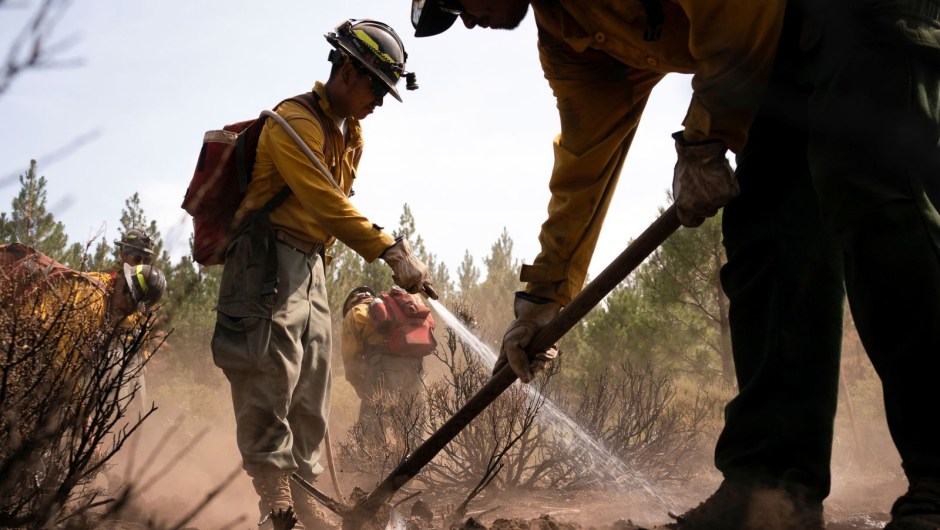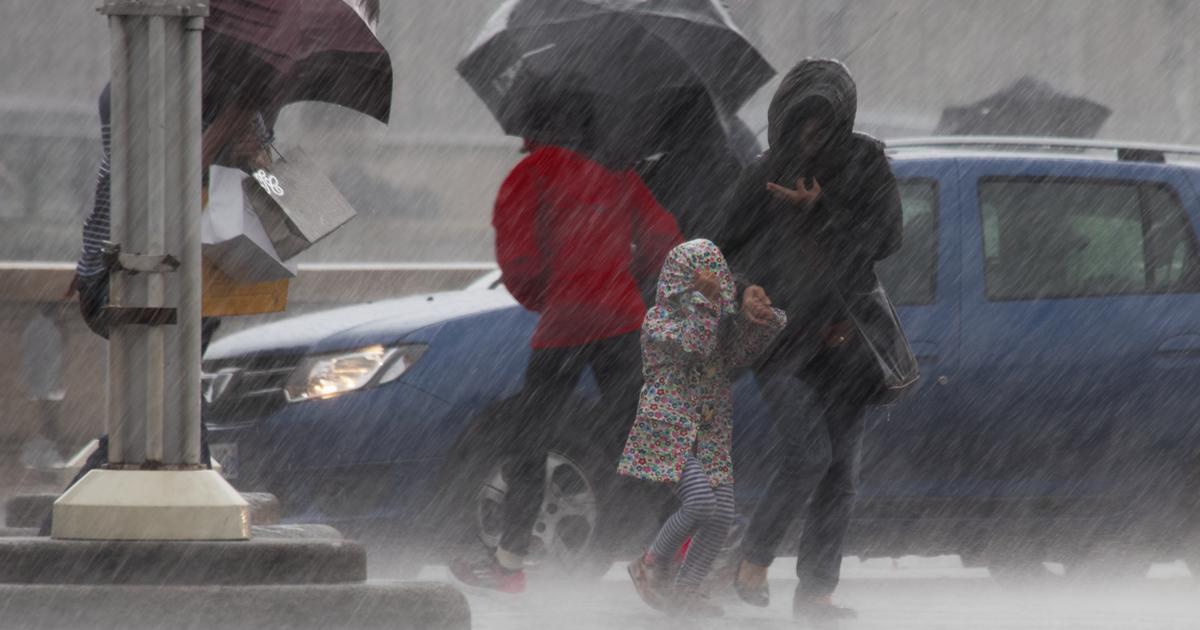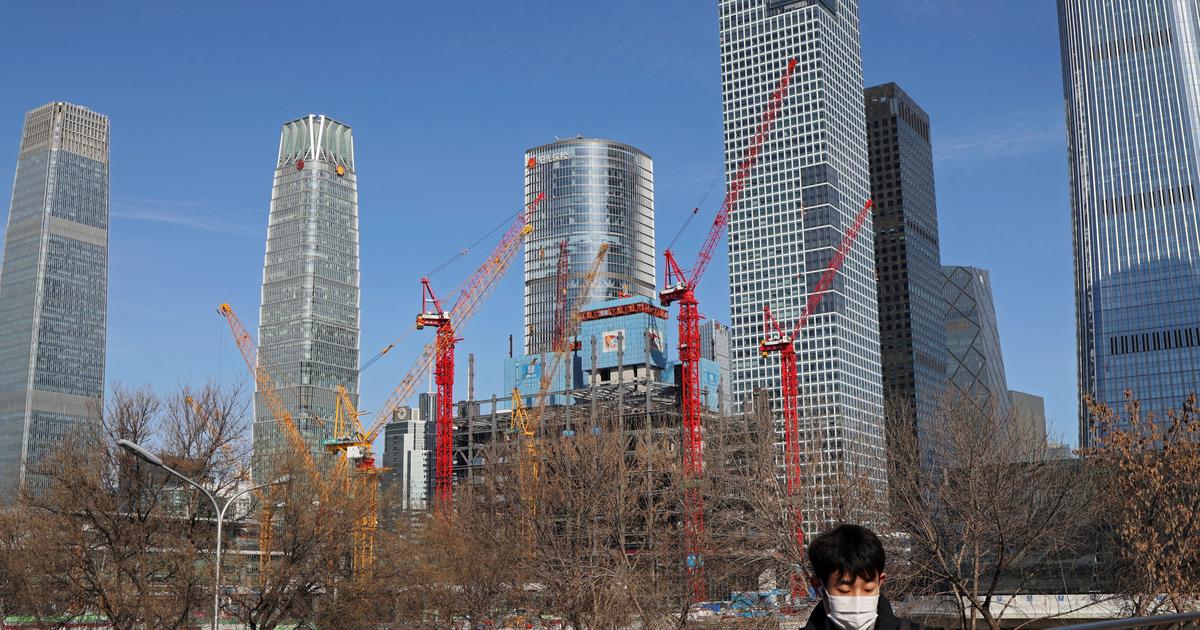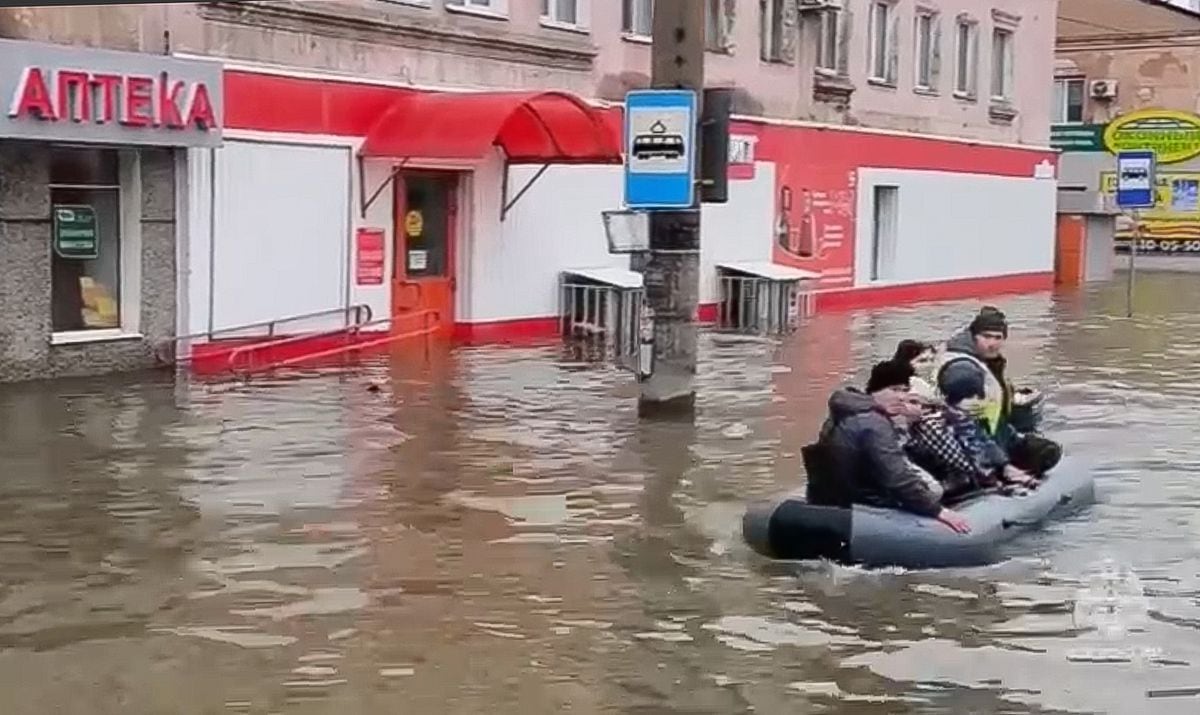See the devastation left by the floods in China 1:21
(CNN Spanish) -
Scientists had warned time and again: climate change increases the probability of more extreme weather events.
But after the floods in Europe, which left more than 200 people dead, some raised concerns about how quickly these events were amplifying.
And then torrential rains hit China, claiming dozens of more lives.
What will happen now?
These events are increasingly likely and threaten the entire planet, including Latin America.
Here we explain what factors are behind these deadly rains and floods.
Global warming
Global warming has made the planet's atmosphere warm, Ricardo Álvarez, an expert in risk analysis and adaptation to climate change, explained to CNN en Español.
As a result, the atmosphere can retain more moisture.
It accumulates more water for a longer amount of time, and once it can no longer accumulate more, torrential rains begin.
They were trapped in a subway flooded 1:12
And torrential rains - in the Chinese city of Zhengzhou, for example, more than 20 centimeters of rain fell in just one hour, which is equivalent to a third of all the rain in 2020 - result in floods that may be from the rivers or water courses overflowing and / or because more water falls than the soil can absorb.
In some cases they can be flash floods, in which the water can rise meters in a matter of seconds.
In addition to global warming, which makes extreme events more likely and stronger, there are other factors that influence floods.
SPECIAL: Everything you need to know about the weather, climate change and the weather
advertising
The type of soil
Another factor that influences floods is the type of soil.
Sandy soils are more absorbent than clay soils, for example, while rocky soils have a much lower water absorption capacity.
(And here's a paradox: more absorbent soils could minimize the risk of flooding in heavy rains. However, in coastal cities, for example, more permeable soils absorb more of the advancing water as a result of rising water levels. sea and this is dangerous for constructions. The clearest example is Miami, where, after the collapse in Surfside, experts have warned that the advance of the water can corrode the foundations of the buildings and, eventually, could even cause a collapse like the what happened, the causes of which are still under investigation).
The risks of the ground where Miami Beach was built, the area near the building that collapsed
Topography
In addition to the type of soil and the presence of water courses, inland the topography factor must be taken into account, according to Álvarez.
In mountainous areas, when there is torrential rain and the water runs down the slope it can cause flash floods and also mudslides that can be deadly.
Floods devastate communities in Germany 1:38
The forest fires
Wildfires - which have already consumed more than 600,000 hectares in the United States this season - also influence flood probabilities.
The flames, Álvarez explains, change the nature of the soils: by burning organic matter they make them "practically waterproof."
And, as a result, when the rain arrives, it cannot penetrate the ground and be absorbed by it, but rather runs through the ground.
1 of 15
|
The Dixie fire continues to burn this July 20 in Butte County, California, where it has burned more than 24,000 hectares.
(Credit: California Department of Forestry and Fire Protection)
2 of 15
|
Firefighters extinguish hot spots in an area affected by the Bootleg Fire, near Bly, Oregon, on July 19.
(Credit: David Ryder / Reuters)
3 of 15
|
The Tamarack fire burns in Markleeville, California, near the Nevada border, on Saturday, July 17.
The fire was caused by lightning on July 4 and has led to the mandatory evacuation of several campsites and neighborhoods in the area.
(Credit: Ty O'Neil / SOPA Images / LightRocket via Getty Images)
4 of 15
|
A member of the Northwest Incident Management Team holds up a map of the Chuweah Creek fire as the fires ravage Nespelem, Washington, on Friday, July 16.
(Credit: David Ryder / Reuters)
5 of 15
|
Firefighters spray water from the Union Pacific fire train as they fight the Dixie Fire in California on July 16.
(Credit: Noah Berger / AP)
6 of 15
|
Horses climb a hillside burned by the Chuweah Creek fire in eastern Washington.
(Credit: David Ryder / Reuters)
7 of 15
|
The fire from the Bootleg fire lights up smoke near Bly, Oregon, on the night of July 16.
(Credit: Payton Bruni / AFP / Getty Images)
8 of 15
|
A firefighter battles the Bootleg Fire in the Fremont-Winema National Forest, along the Oregon-California border, Thursday, July 15.
(Credit: US Forest Service / ZUMA Press Wire)
9 of 15
|
Dee McCarley, evacuated from the fires, hugs her cat Bunny at a Red Cross center in Klamath Falls, Oregon, on Wednesday, July 14.
(Credit: Nathan Howard / AP)
10 of 15
|
An airplane fires flame retardant at the Chuweah Creek fire in Washington on July 14.
(Credit: David Ryder / Reuters)
11 of 15
|
Fire consumes a home as the Sugar Fire, part of the Beckwourth Complex fire, ravages Doyle, California, on July 10.
It is the second time in less than a year that the small town has been devastated by a forest fire.
(Credit: Noah Berger / AP)
12 of 15
|
Two men hug a Red Cross member at a Bootleg fire evacuation center in Klamath Falls, Oregon, on July 12.
(Credit: Mathieu Lewis-Rolland / Reuters)
13 of 15
|
The Sugar fire burns in Doyle, California, on July 9.
(Credit: Noah Berger / AP)
14 of 15
|
A group of firefighters monitor the Sugar fire in Doyle, California, on July 9.
(Credit: Noah Berger / AP)
15 of 15
|
In this long-exposure photo, taken early on July 2, flames surround a drought-stricken Lake Shasta during the Salt Fire in Lakehead, California.
(Credit: Josh Edelson / AFP / Getty Images)
The combination of fires with certain topographies and rainfall makes the probability of flash floods very high, according to the expert.
And the fire problem right now is not limited to the United States.
In the last month, flames have swept through areas across the globe where they used to not burn as often as they do now, including areas of Canada and Siberia.
Coastal regions are also threatened by rising sea levels
Added to the likelihood of more intense rains, in coastal areas is the rise in sea level, which also affects flooding due to high tide.
A study by Climate Central, an organization that focuses on the impacts of the climate crisis, predicts an increase of between 0.6 and 2.1 meters in sea level over the course of this century, which would leave the land practically uninhabitable in which live 200 million people.
Sea level rise
What will happen in Miami with rising sea levels?
1:00
An extra danger: "here it is impossible for this to happen"
Despite the irrefutable evidence - which today takes forms as diverse as heat waves that kill hundreds, 'fire tornadoes' and runaway rivers that destroy everything in their path - there are still climate change deniers. . There are myths amplified by some politicians like former President Donald Trump and there are also beliefs that, although not myths in themselves, are also dangerous in current circumstances.
One of them, Álvarez explains, is to think that catastrophes like the ones I see on the news are not going to happen to me. "There is a natural tendency (...) to think that if it has not happened here on my site, nothing will happen. Or that, if something is going to happen, it will be very little," he explains. And Álvarez tells an example that he lived close to: in 1992, Category 5 Hurricane Andrew destroyed much of South Miami. As part of the evaluation work, the population of the area was surveyed and the result was that the further people were from the place where the eye of the hurricane had passed, the lower the perception of its severity.
In this sense, the floods in Germany were a warning for many in the so-called first world: climate change is not (only) about the survival of polar bears in the Arctic or of communities in poor countries displaced by the effects of the drought or hurricanes.
Its effects are already being felt in every corner of the planet.
And, according to scientists, they have only just begun.
Floods







